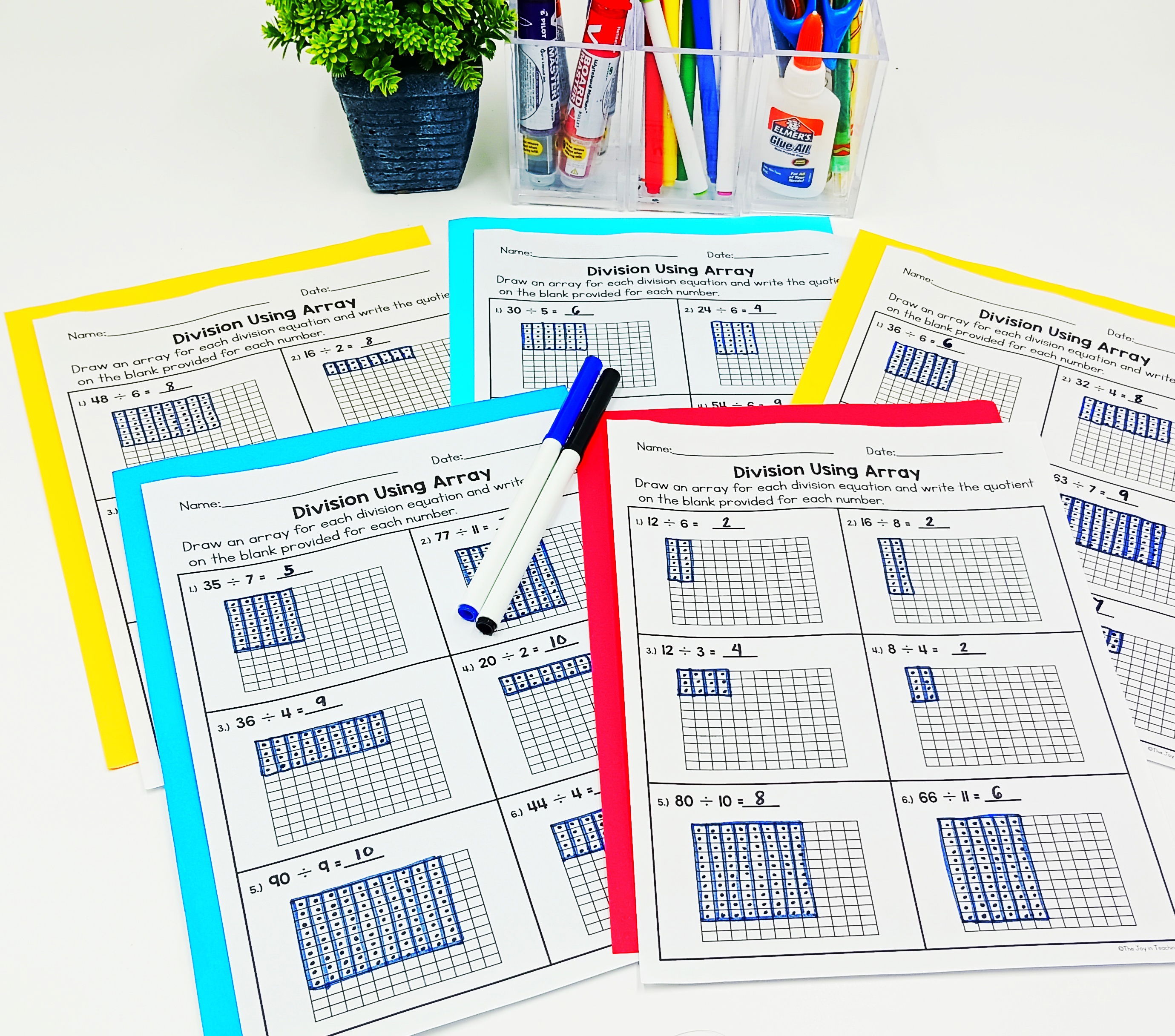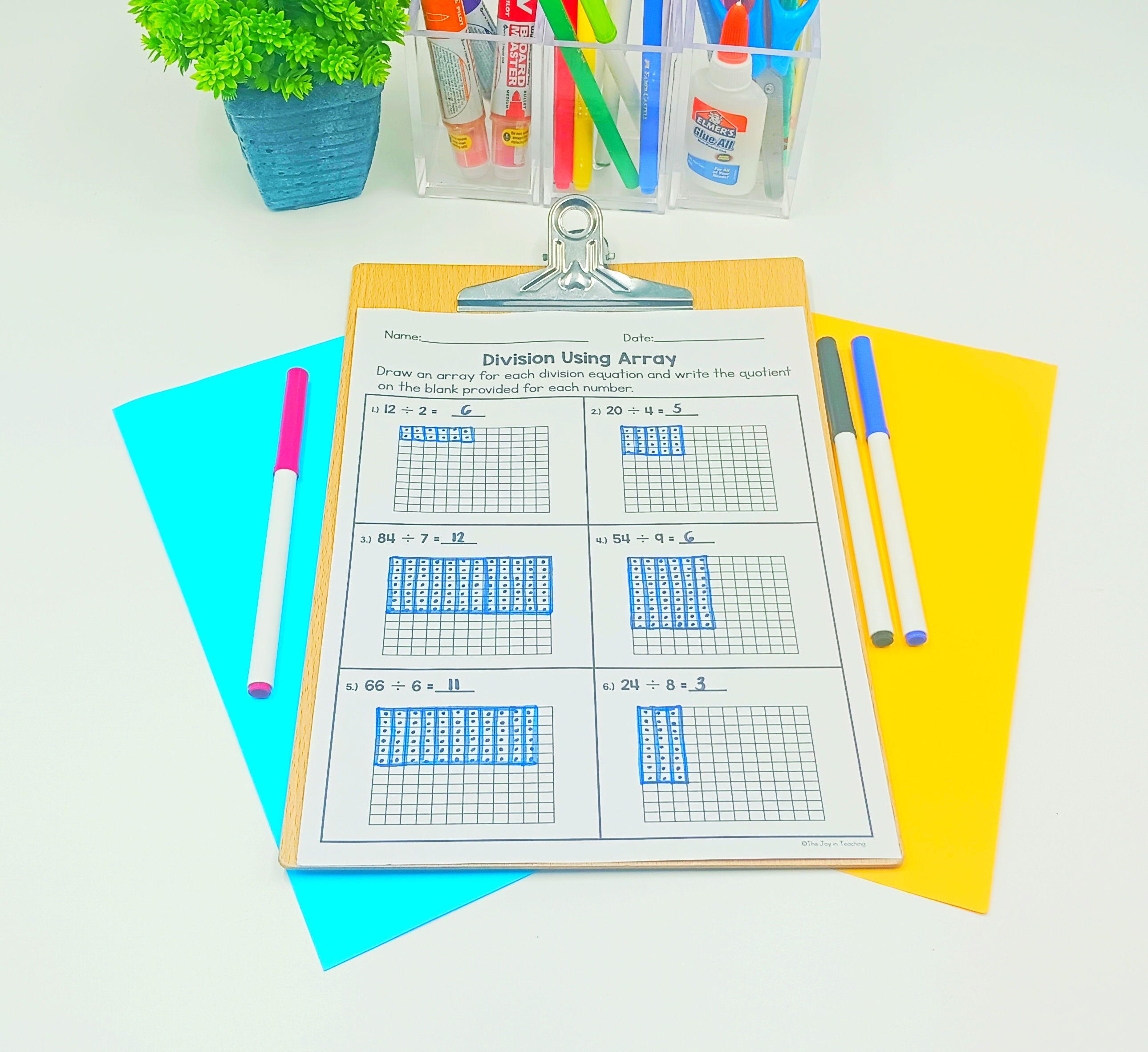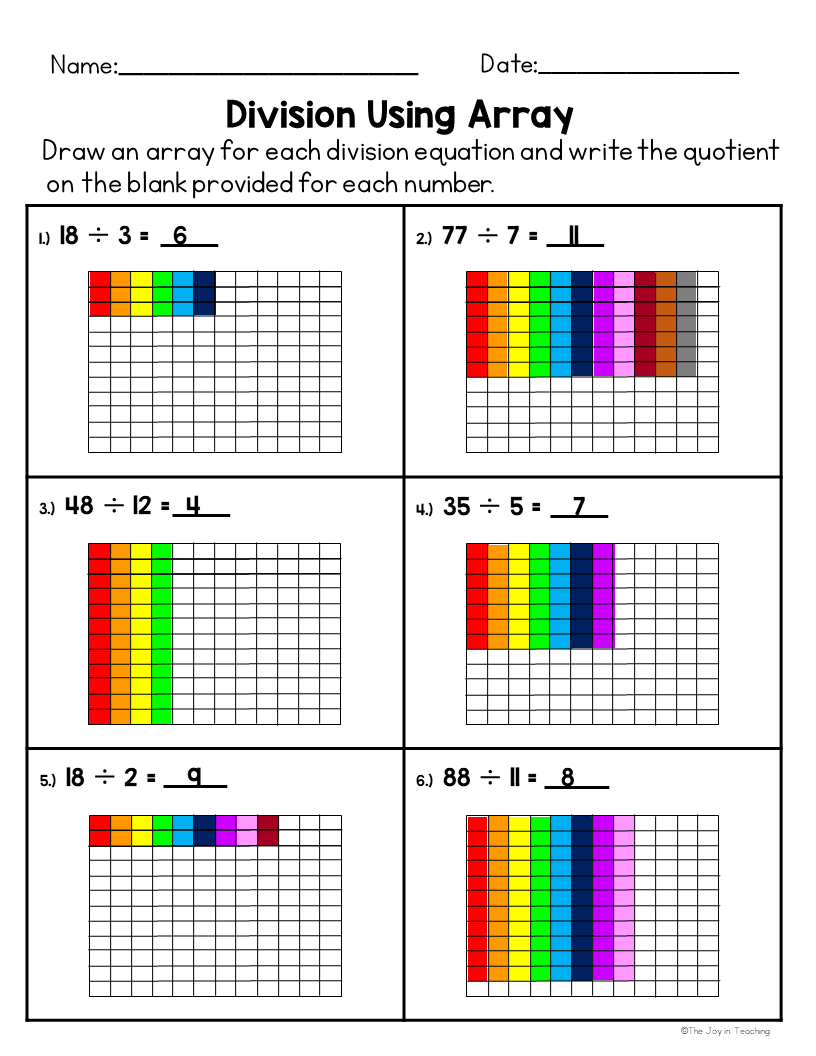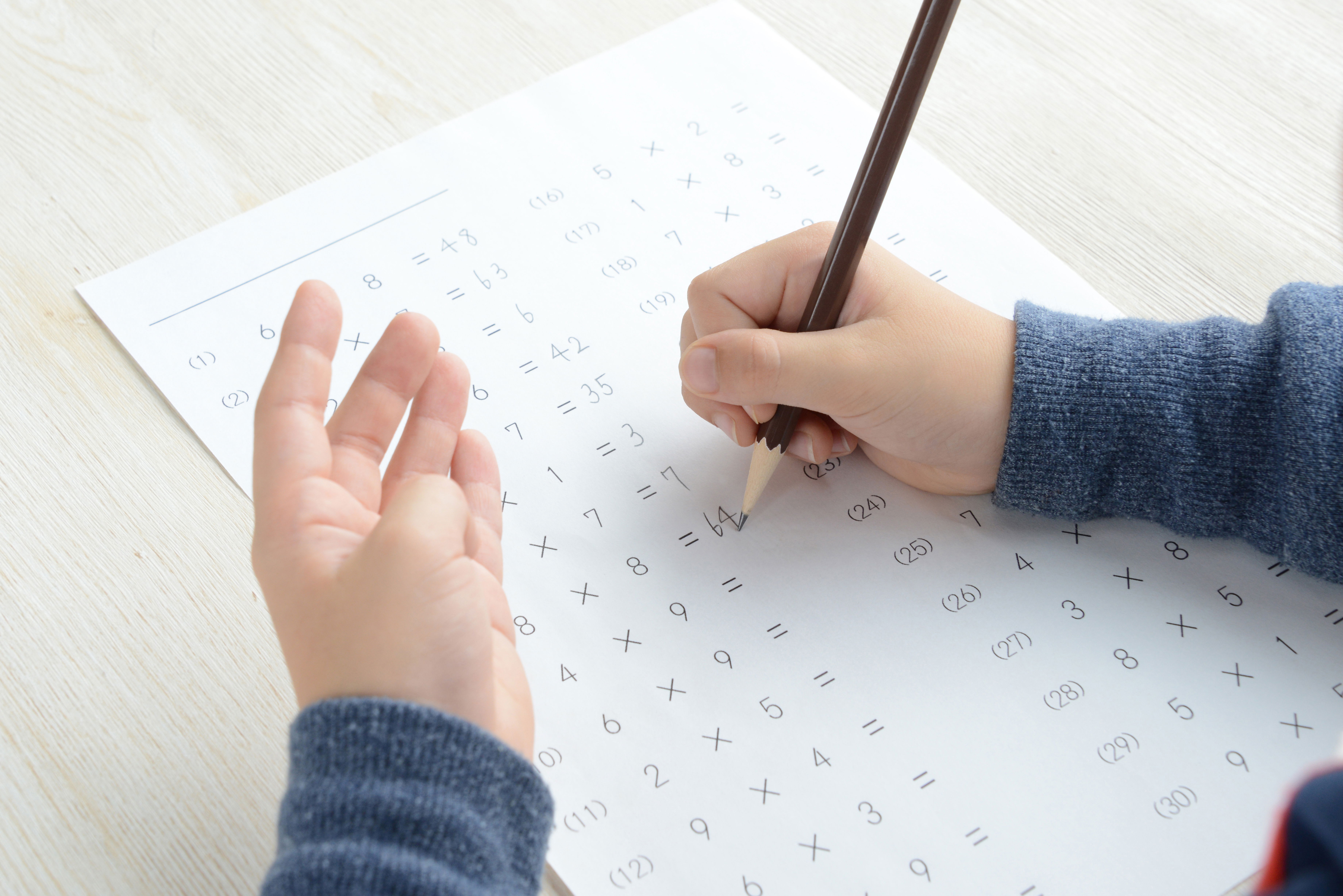How to Teach Division Using Arrays: A Fun and Engaging Guide
Teaching division can feel like trying to explain why you can’t have dessert before dinner to a child—it’s often met with confusion and resistance. But what if we told you there’s a fun and engaging way to help students grasp the concept of division using arrays? No, we’re not talking about arrays of desserts (though that would be awesome). We’re talking about division using arrays! In this post, we'll dive into how using arrays can transform division from a dreaded math problem into an enjoyable puzzle, and we’ll share some tips and tricks to make the process even more effective.

Why Use Arrays to Teach Division Using Array?
Arrays are like the Swiss Army knives of the math world—they’re versatile, practical, and surprisingly fun. By arranging objects into rows and columns, arrays provide a visual representation of multiplication and division. This visual approach helps students see the relationship between numbers, making abstract concepts more concrete. For example, when students use arrays to solve a problem like 56 ÷ 8, they can physically draw circles and box sets to visualize how 56 objects can be divided into 8 equal groups. This hands-on activity not only makes division more understandable but also more engaging.

The Magic of Division Using Arrays
Here’s what you can expect when teaching division using arrays:
1. Engaging Activities: Turning division into a series of fun and interactive activities, students will shade different colors on arrays and box sets to find the quotient. It’s like a math treasure hunt!

2. Visualization: By visualizing the division equation, students can better understand the concept. This is especially useful for visual learners who struggle with traditional methods. For example: array of vegetables.

3. Interpretation: These activities help students interpret whole-number quotients by grouping their drawings, aligning with the Common Core Standard CCSS3.OA.A.2.

Standards and Educational Goals
Using arrays to teach division aligns with the Common Core Standard CCSS3.OA.A.2, focusing on interpreting whole-number quotients of whole numbers. This approach helps students understand problems like 56 ÷ 8, not just as an equation, but as how many objects are in each share or how many shares exist when divided into equal groups.
Tips and Tricks for Teaching Division Using Arrays
1. Start with Multiplication
Before diving into division, ensure that students are comfortable with multiplication arrays. This foundation will make it easier for them to transition to division. For example, if they know that 8 x 7 = 56, they can easily understand that 56 ÷ 8 = 7.

2. Use Real-Life Examples
Make division relatable with real-life scenarios. For example, ask, “If we have 56 candies and 8 friends, how many candies does each friend get?” This helps students see the practical application of division.

3. Encourage Group Work
Group activities can make learning more fun and less intimidating. Have students work in pairs or small groups to solve division problems using arrays. This encourages collaboration and allows them to learn from each other.

4. Integrate Technology
Numerous online tools and apps complement the use of arrays for division. Interactive games and virtual manipulatives can enhance the learning experience and provide additional practice.

5. Celebrate Successes
Celebrate small victories to keep students motivated. Positive reinforcement can build confidence and enthusiasm for math.

Hear from the Happy Users!
Don’t just take our word for it—teachers and parents love the array method! Rhacquel V. shared,
“Extremely satisfied! My students are able to grasp the concept of division by using these resources. Thanks!”
Link to the resource: Division Using Arrays by The Joy in Teaching | TPT
Conclusion
Teaching division doesn’t have to be a daunting task. By visualizing division through arrays, students can better understand and retain the concept, setting them up for success in their mathematical journey. So, what are you waiting for? Start incorporating arrays into your teaching today and watch your students conquer division with smiles on their faces!
Stay Connected!
We love hearing from our community of teachers and parents. Follow us on social media for more tips, resources, and updates:
Got questions or want to share your success stories? Drop me an email at thejoyinteaching@gmail.com. I love hearing from fellow educators and parents! Happy Teaching!
Joy Medalla
The Joy in Teaching 💛